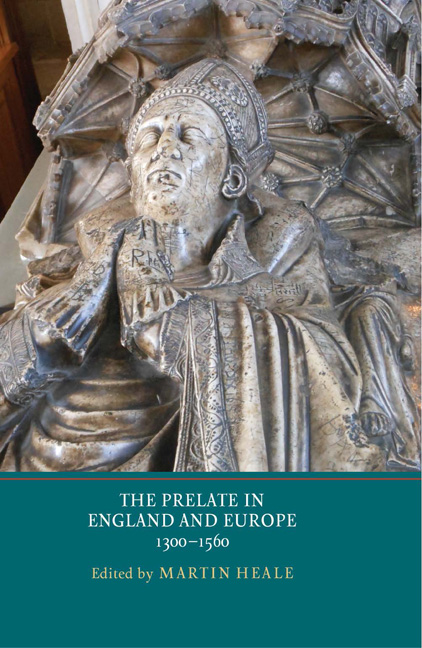Book contents
- Frontmatter
- CONTENTS
- List of Illustrations
- List of Contributors
- Preface and Acknowledgements
- List of Abbreviations
- Introduction
- Part I Prelates and Power
- The Clerical Chancellors of Late Medieval England
- Prelates and the Alien Priories
- Cardinals at the Court of Francis I
- Part II Patronage and Learning
- Part III Identity and Display
- Part IV Attitudes towards Prelacy
- Index of People and Places
- Index of Subjects
- YORK MEDIEVAL PRESS: PUBLICATIONS
Cardinals at the Court of Francis I
from Part I - Prelates and Power
Published online by Cambridge University Press: 05 November 2014
- Frontmatter
- CONTENTS
- List of Illustrations
- List of Contributors
- Preface and Acknowledgements
- List of Abbreviations
- Introduction
- Part I Prelates and Power
- The Clerical Chancellors of Late Medieval England
- Prelates and the Alien Priories
- Cardinals at the Court of Francis I
- Part II Patronage and Learning
- Part III Identity and Display
- Part IV Attitudes towards Prelacy
- Index of People and Places
- Index of Subjects
- YORK MEDIEVAL PRESS: PUBLICATIONS
Summary
The cardinals present in the court of Francis I (1515–47) can be categorized in three different ways. First the courtiers, in other words the cardinals from the most powerful court families who gravitated around the sovereign without occupying any political or administrative function. These were Cardinals Adrien Gouffier, Claude de Givry, Odet de Châtillon and Jacques d'Annebault. Then there were the cardinals who took advantage of the captive market of curial ecclesiastical missions, especially as chaplain (Cardinals Jean Le Veneur and Antoine Sanguin) or almoner. These missions were sometimes, though not always, a stepping stone to political service. Finally there were the cardinals who occupied a role in royal power and administration. The latter hailed from the ranks of State prelates whose presence in government was quite decisive. These were the Cardinals Antoine Duprat, François de Tournon, Jean Du Bellay and Charles Hémard de Denonville. It is important to situate these cardinals in their right place, between the court where they resided and the council around which they gravitated.
French cardinals and Renaissance cardinals
An important development in the history of the cardinals was the rise in their number, starting with Sixtus IV (1471–84). Although during the Middle Ages, they rarely exceeded a maximum of thirty or so, the count exploded from the end of the fifteenth century.
- Type
- Chapter
- Information
- The Prelate in England and Europe, 1300–1560 , pp. 76 - 98Publisher: Boydell & BrewerPrint publication year: 2014

